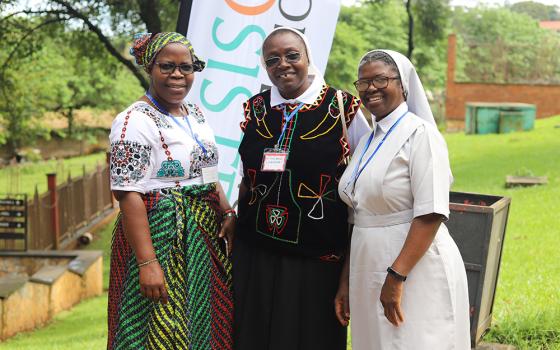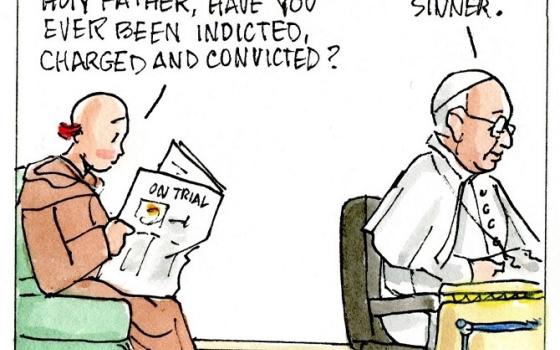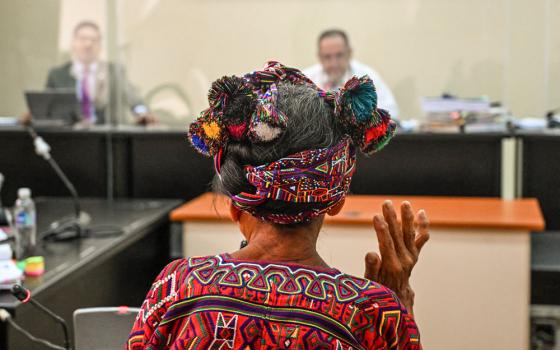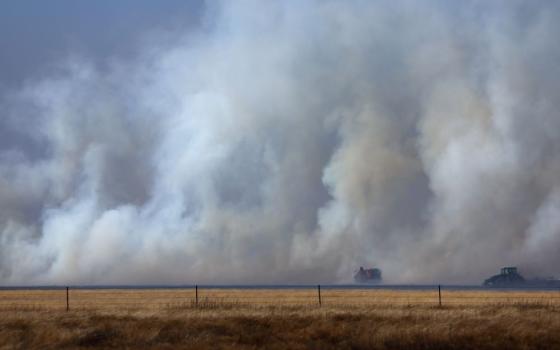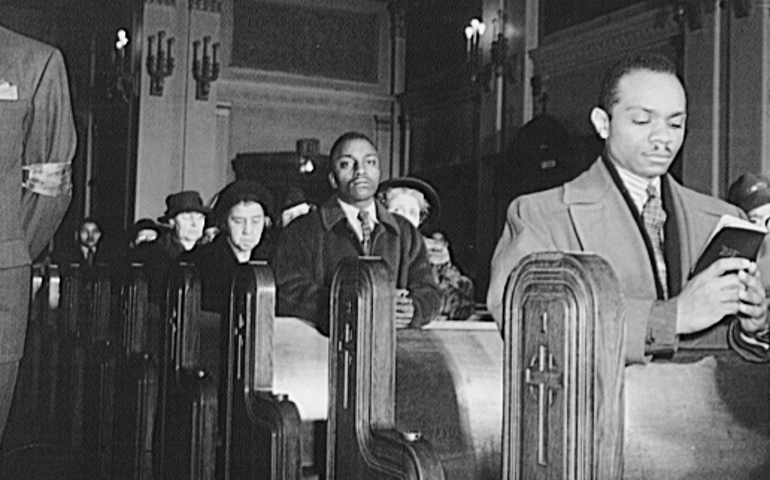
 Timothy Neary's new book, Crossing Parish Boundaries: Race, Sports, and Catholic Youth in Chicago, 1914-1954 (University of Chicago Press), comes at a time when violence and racial tension again plague the city of Chicago. Neary's work is part biography of the extraordinary Bishop Bernard Sheil, part urban study, part religious survey, and part racial history, all combined into a fluid and fascinating text that is as readable as it is informative.
Timothy Neary's new book, Crossing Parish Boundaries: Race, Sports, and Catholic Youth in Chicago, 1914-1954 (University of Chicago Press), comes at a time when violence and racial tension again plague the city of Chicago. Neary's work is part biography of the extraordinary Bishop Bernard Sheil, part urban study, part religious survey, and part racial history, all combined into a fluid and fascinating text that is as readable as it is informative.
In the years between the first and second world wars, migration in the United States changed dramatically. The Immigration Act of 1924 was specifically designed to limit the influx of Southern and Eastern Europeans, as well as Asians, and the law largely succeeded. But the economic engines of the industrial states needed workers and, increasingly, domestic migration replaced migration from abroad.
One group stood out among these domestic migrants. Black Americans from the rural South flocked to Detroit and Chicago and New York, beginning in the war years and continuing throughout the 1920s and 1930s. Other immigrant communities had experienced difficulties and even hostility upon arrival, but that was as nothing compared to what awaited these fellow Americans who were identifiable not only by their different cultural touchstones, but by the color of their skin.
On July 27, 1919, with the postwar depression making jobs scarce, and blacks confined to overcrowded neighborhoods in the "Black Belt" on the city's South Side, the hostility to the newcomers broke out. Alongside Lake Michigan, a kerfuffle turned into a riot. A young black boy, Eugene Williams, drowned and police refused to arrest a white man accused by black witnesses of killing the boy. Instead, police arrested a black man. A fortnight of violence ensued in which 38 people were killed, 23 of them black and 15 of them white. More than 500 people were injured.
Most of the African-American newcomers to Chicago were not Catholic, but enough of them were, and they quickly overwhelmed the resources of the one historically black Catholic church, St. Monica.
St. Monica had been served by Fr. Augustus Tolton, born in 1854 in Missouri and raised in Quincy, Ill., who studied in Rome after American seminaries refused him, and was ordained in 1886. He transferred to Chicago from his home diocese of Quincy, and in 1889 Archbishop Patrick Feehan appointed him founding pastor at St. Monica. This priest was a source of pride for the black community, but regrettably Tolton died of heatstroke at age 43 in 1897. The history of black Catholicism in the Windy City might have been different if this Roman-trained yet homegrown pastor had lived a full life.
In 1917, Archbishop George Mundelein enlisted the Society of the Divine Word to take over the pastoral care of St. Monica and the growing black Catholic community. Despite his general aversion to national parishes, Mundelein saw the newly arrived and growing black community as best served by a variation on the national parish model, as a kind of special mission territory. Throughout his tenure, he would enlist religious orders schooled in mission work to care for Chicago's black Catholics.
Mundelein also banned whites from attending the church. "I desire St. Monica's to be entirely reserved for the colored Catholics of Chicago and particularly of the South Side," he wrote in a letter to the provincial of the Society of the Divine Word. "All other Catholics of whatsoever race or color are to be requested not to intrude. It is, of course, understood that I have no intention of excluding colored Catholics from any of the other churches in the diocese, and particularly if they live in another part of the city, but simply of excluding from St. Monica's all but the colored Catholics."
Perhaps he was naive, but this was an invitation to segregation. Black Catholics were not warmly welcomed at the other parishes of the archdiocese. A group of black laymen protested the new policy, seeing it for what it was, but Mundelein was unmoved.
The transformation that overtook parts of Chicago in the 1920s is stunning in its speed. In 1916, Mundelein consecrated Corpus Christi Church, a magnificent limestone structure with altars of Italian marble and stained glass windows from Munich, situated at a fashionable location on Grand Avenue on the city's South Side. Within a decade, most of the Irish parishioners who had built the church had left the neighborhood. Attendance had dropped from a high of 2,000 on a Sunday to fewer than 100. The parish school was closed in 1928.
In the spring of 1929, Mundelein called the Franciscan provincial and asked them to take over the parish, and they tried retreats and other spiritual efforts to renew the church. Finally, in 1932, Mundelein gave permission for the Franciscans to begin ministering to the African-Americans who now predominated in the neighborhood.
By the end of the year, two convert classes brought 260 black Catholics into the fold. The next year, the school was reopened with 270 students in attendance. Within four years, the number would balloon to 780 students. The parish was flourishing but it was not racially integrated.
Neary then turns to the centerpiece of his book, examining one man's effort to create an arena where the races could mix. That man was Bishop Bernard Sheil, named Mundelein's auxiliary in 1928, and the arena he chose for his efforts was a literal arena, the boxing ring and other sporting facilities associated with the Catholic Youth Organization. Sheil was the visionary that complemented the managerial Mundelein, as bad with money as the cardinal was good, a dreadful manager but a font of ideas and energy.
Tomorrow, I shall continue this review.
[Michael Sean Winters is NCR Washington columnist and a visiting fellow at Catholic University's Institute for Policy Research and Catholic Studies.]

